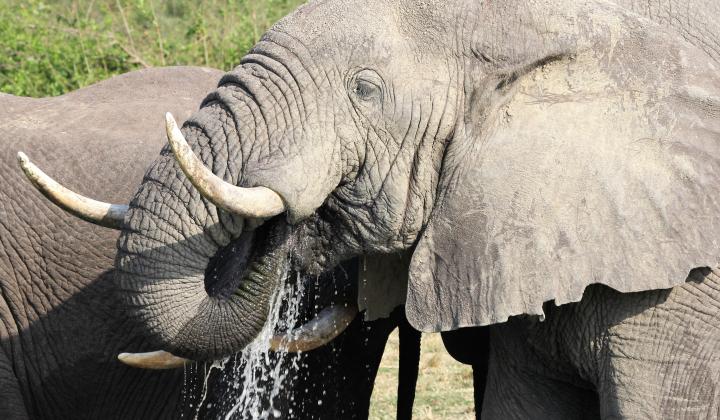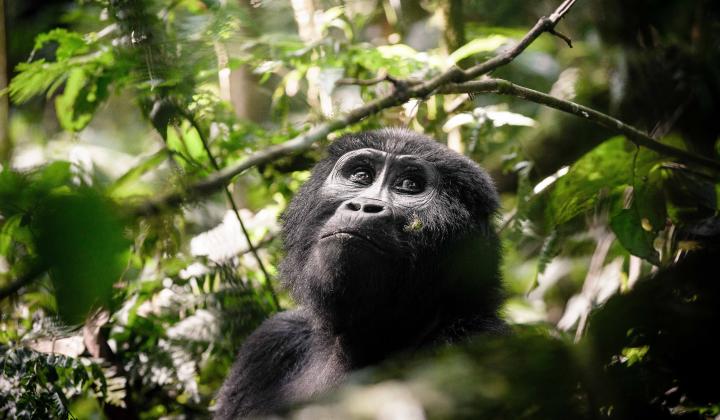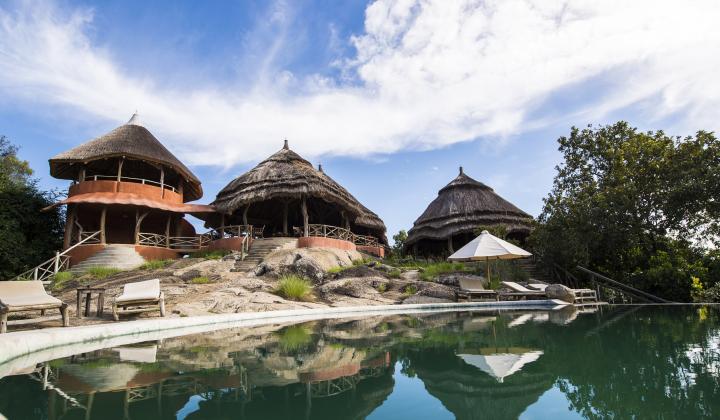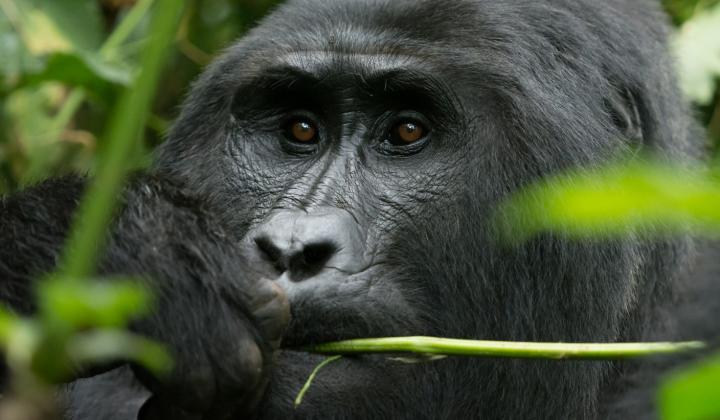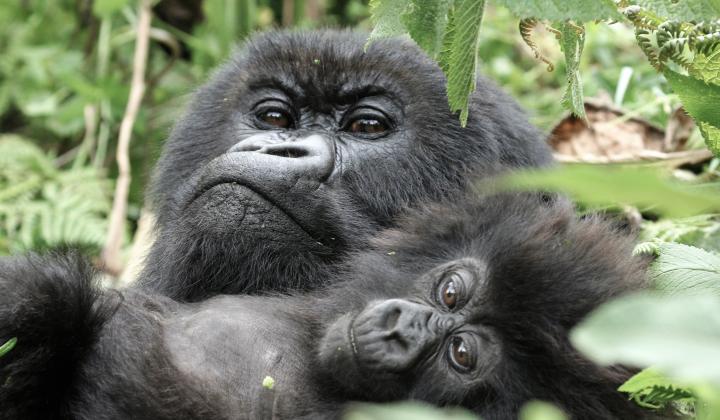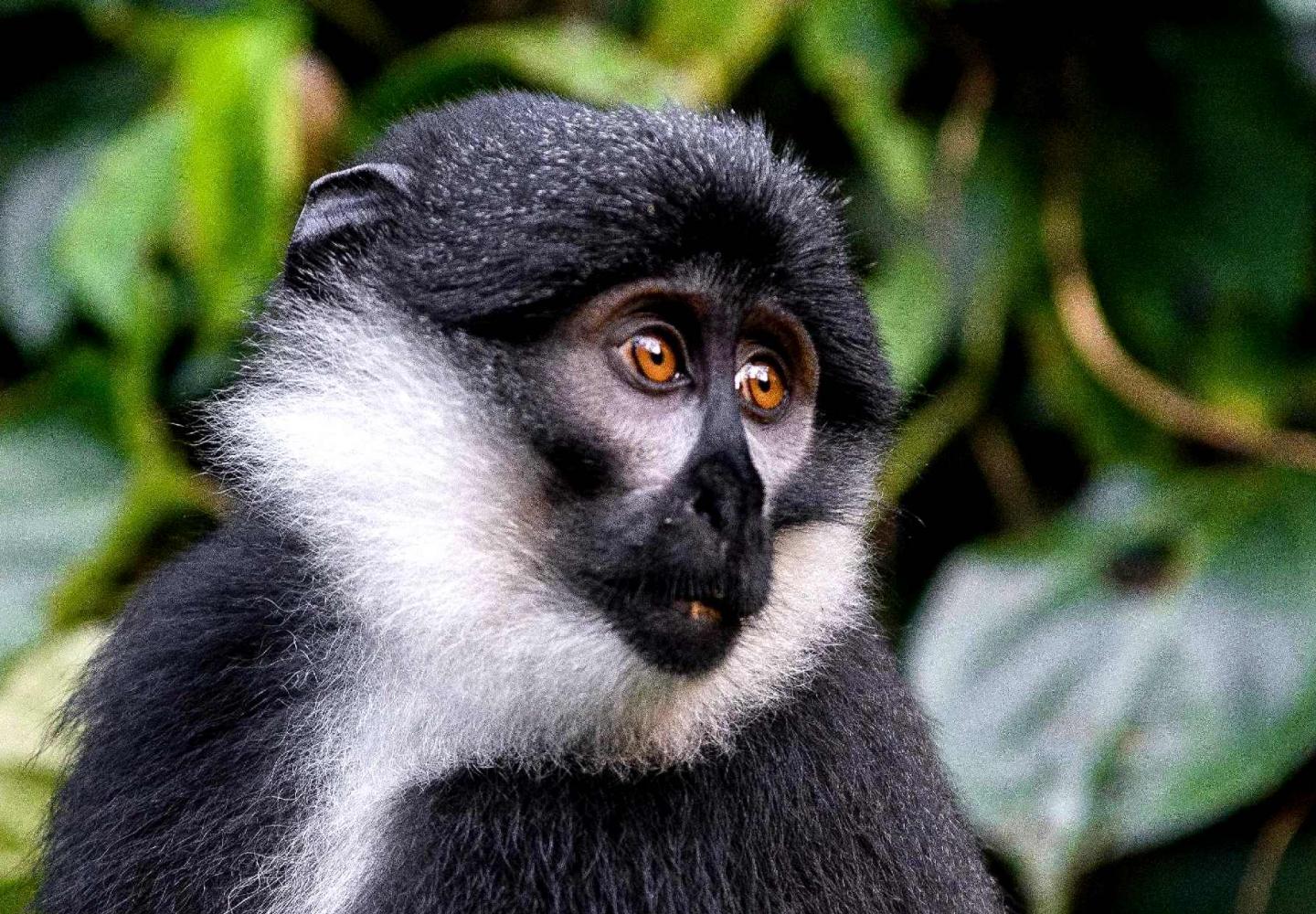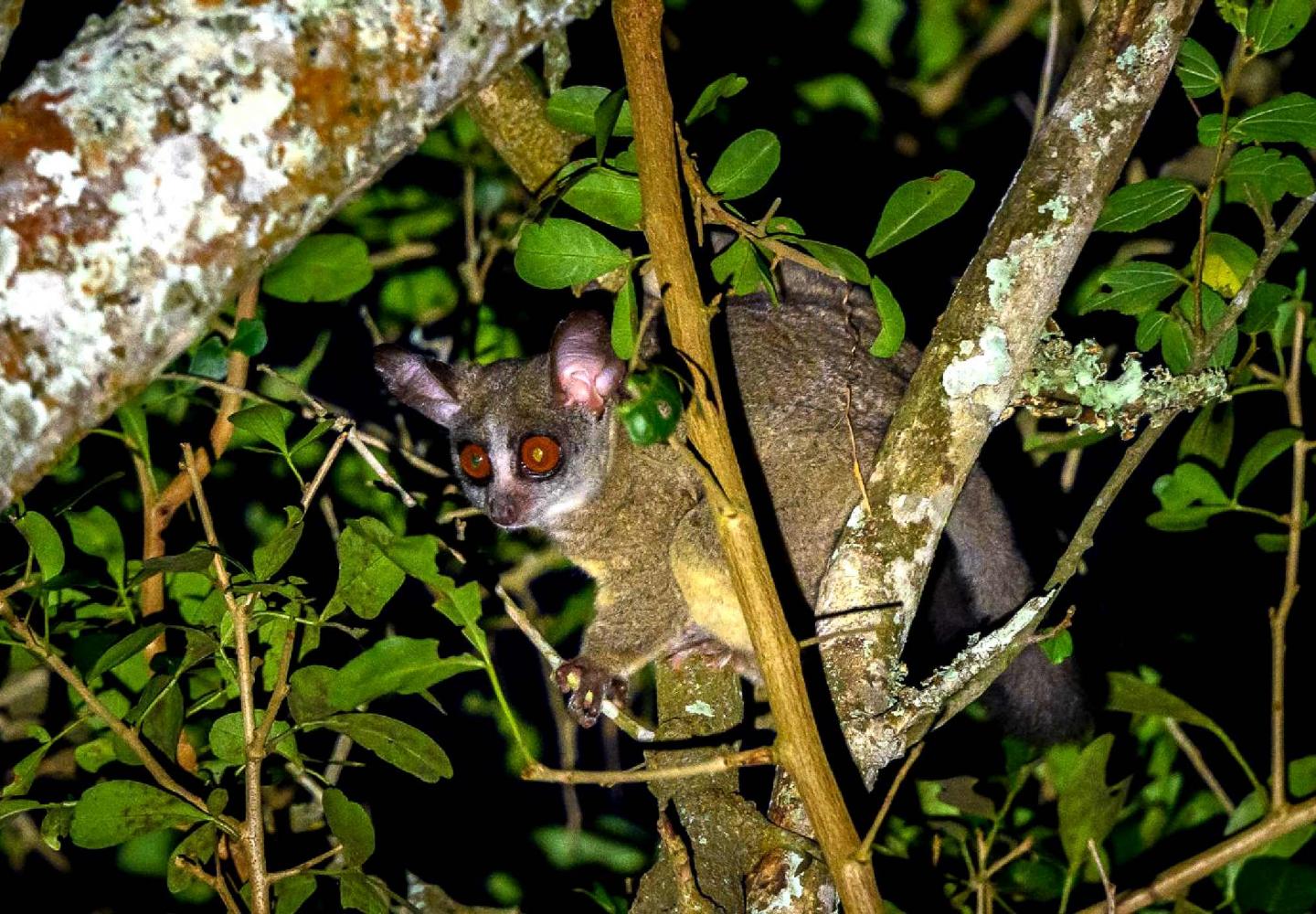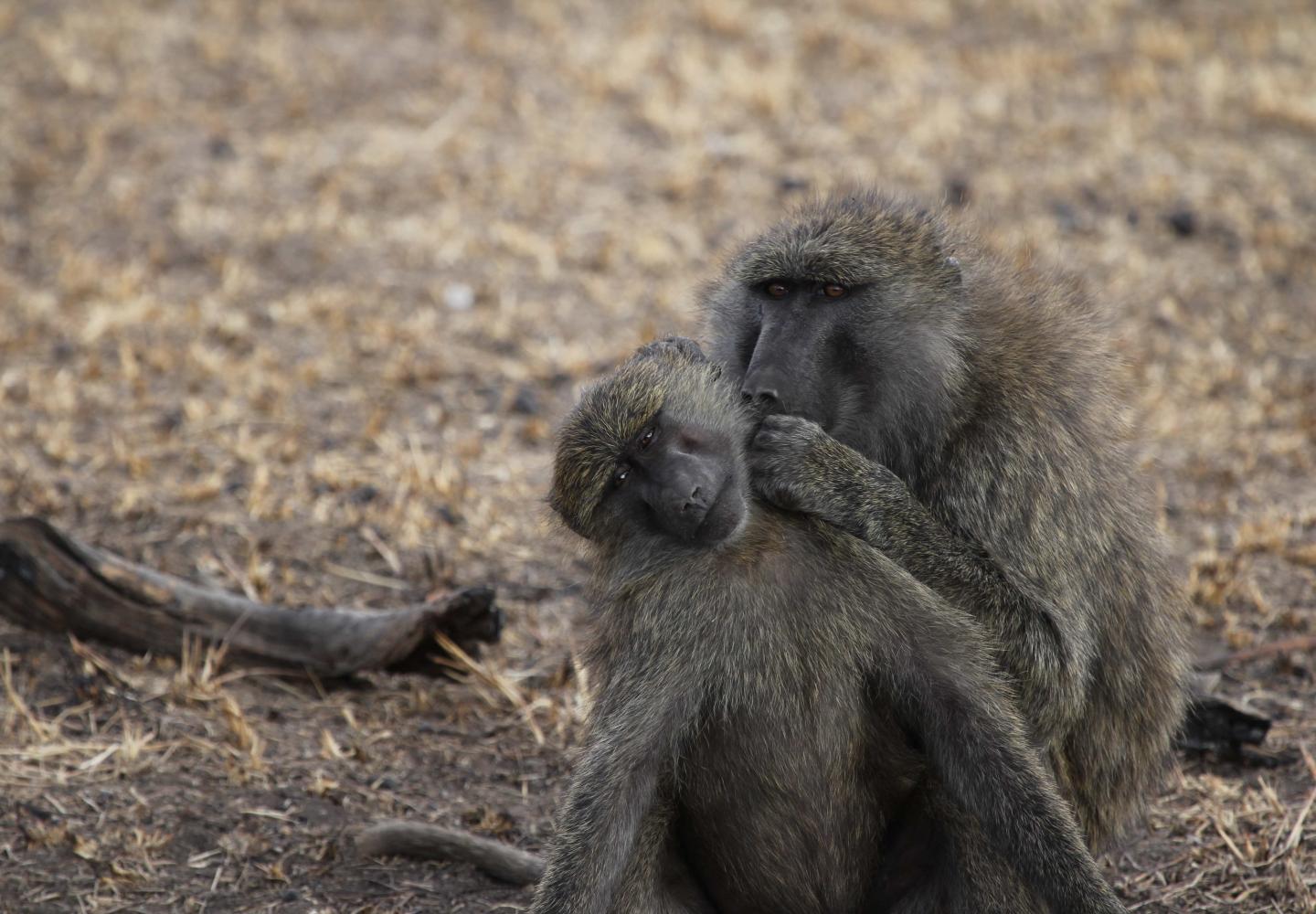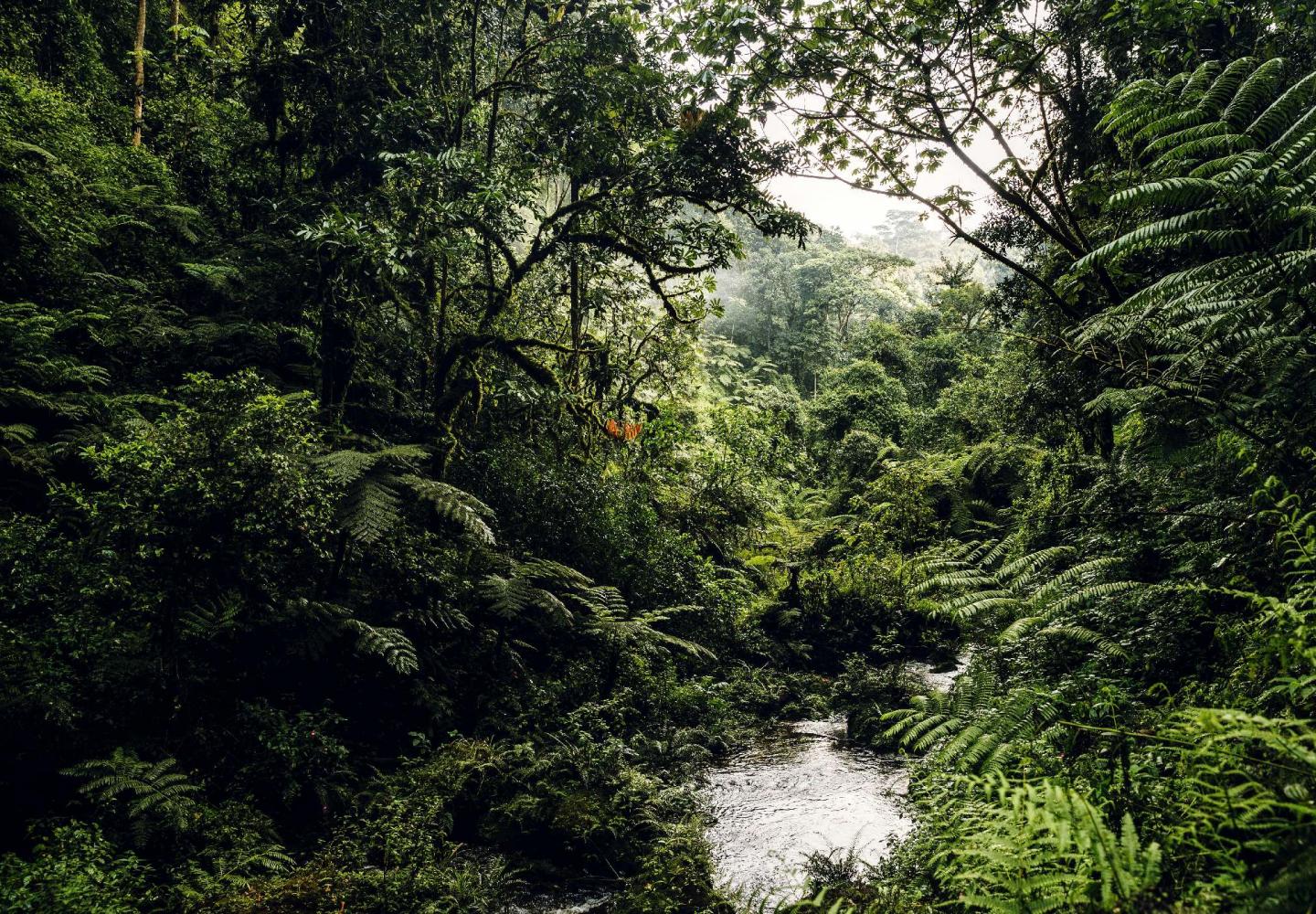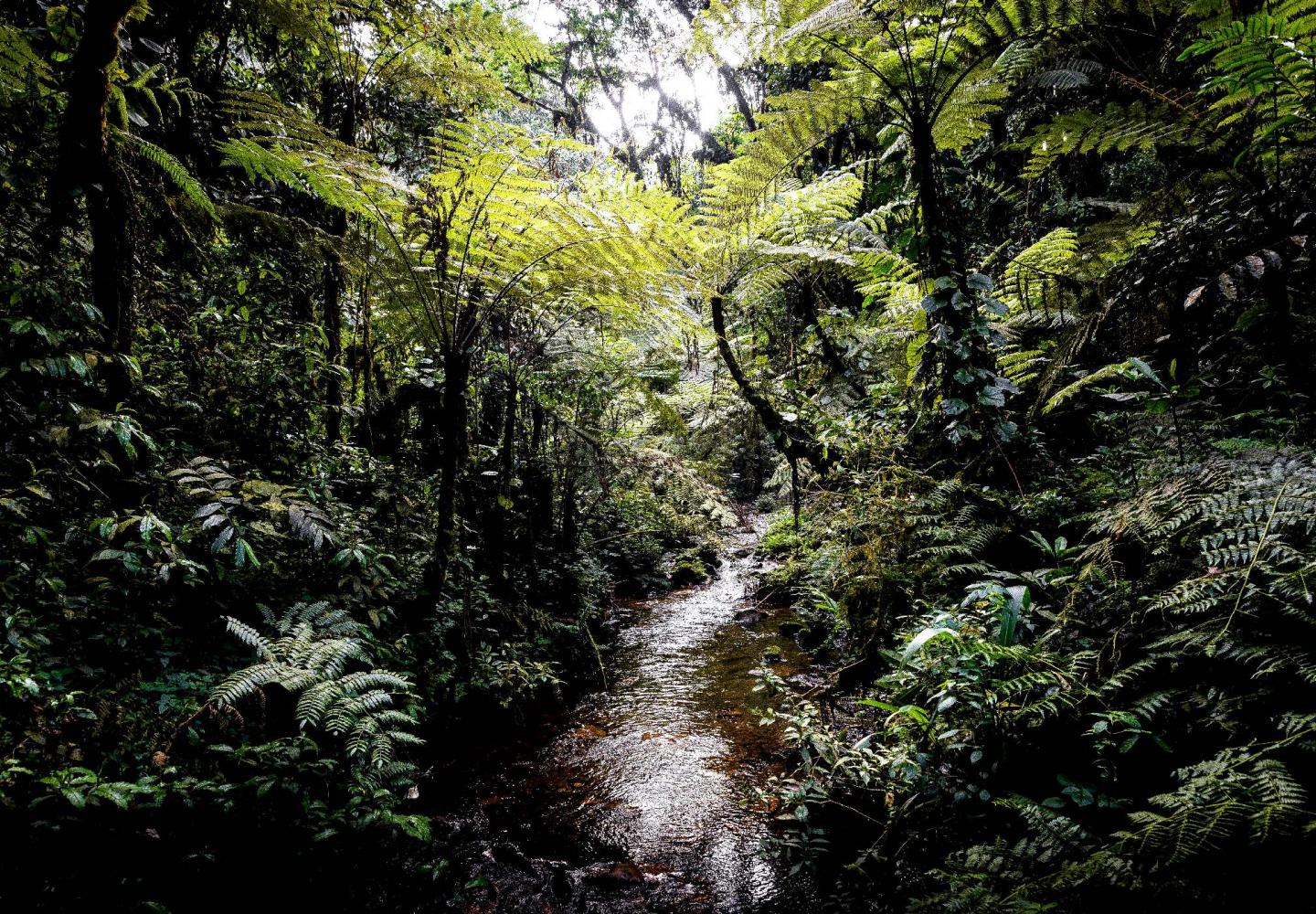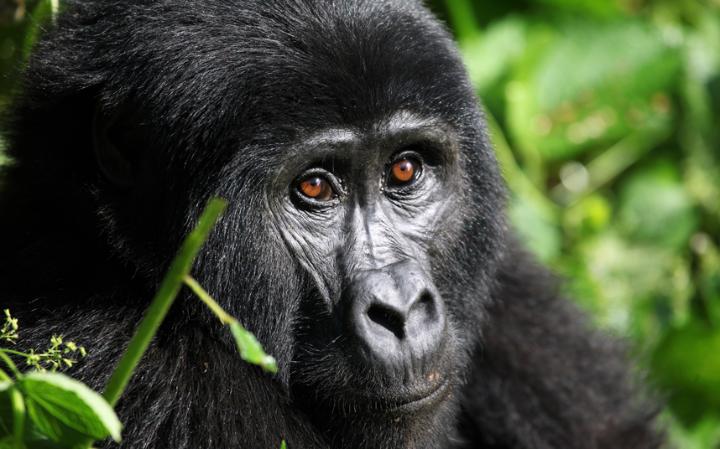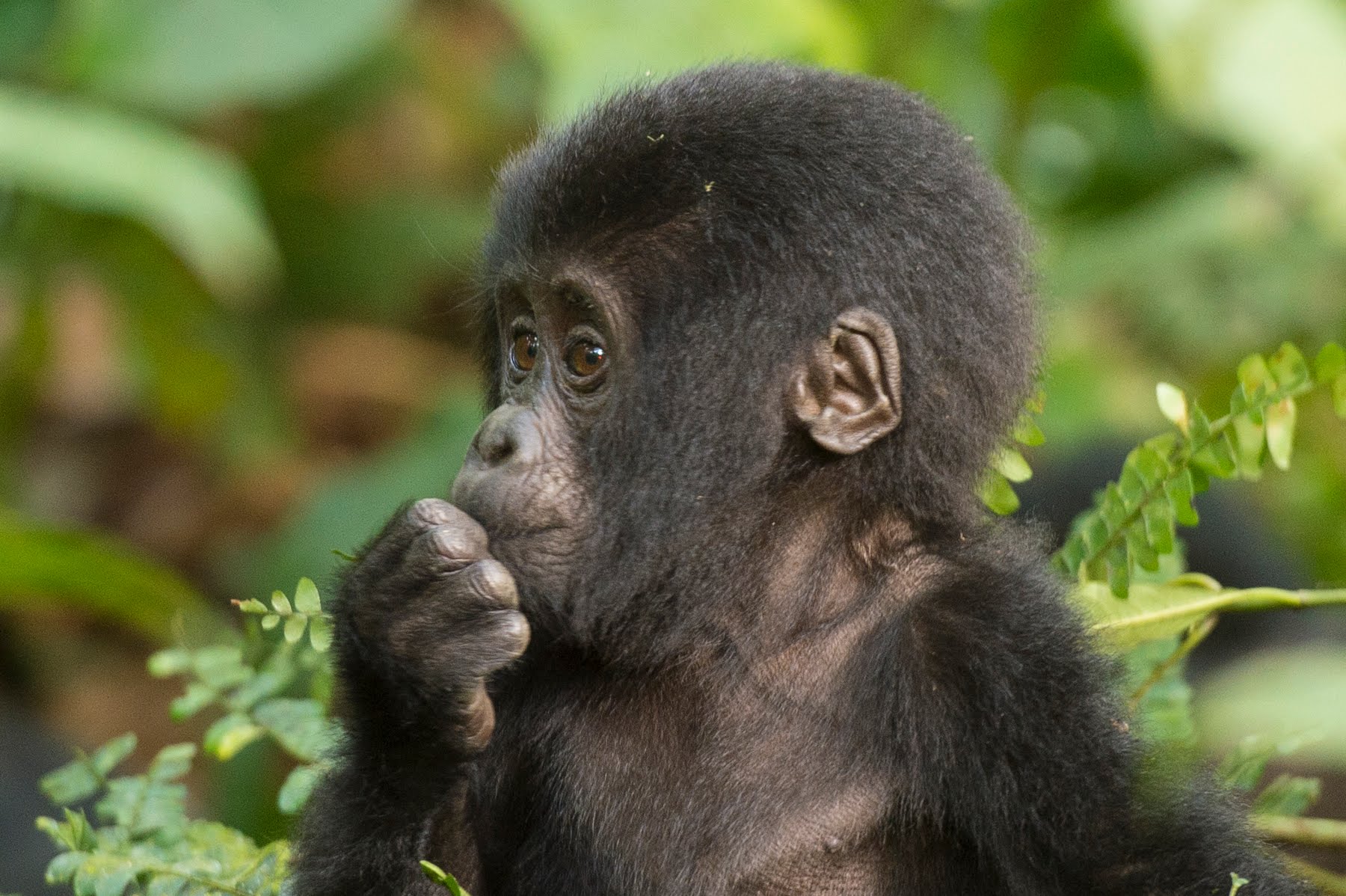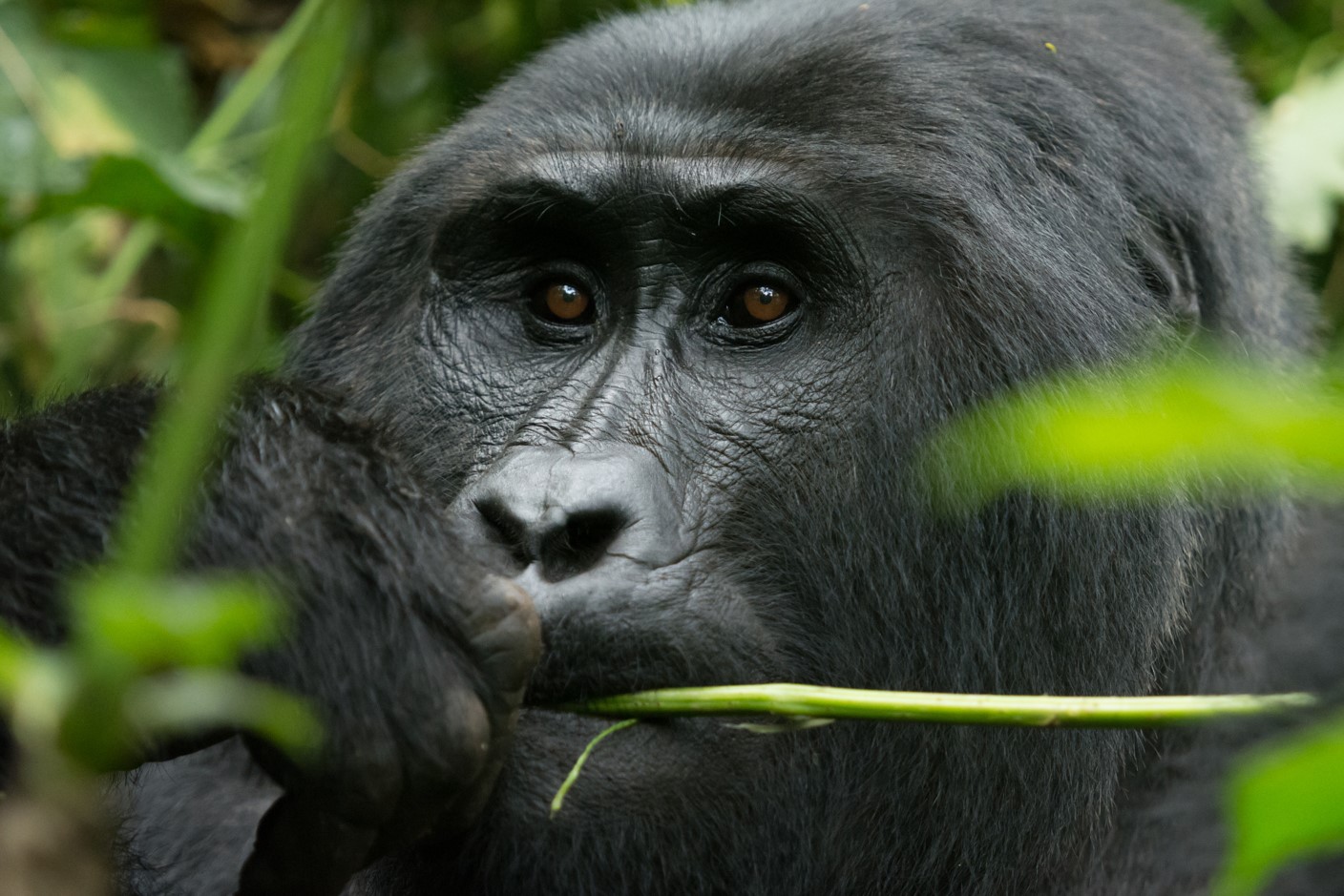Uganda is a small country but it has been blessed with more 13 different types of primate species and the highest concentration of mountain gorillas and chimpanzees. Despite their big numbers, these are extremely endangered species and they face risk of extinction.
Mountain Gorillas and the Common Chimpanzee are classified as endangered species according to the International Union for Conservation of Nature (IUCN) Red List. The Uganda Wildlife Authority (UWA) is the body in Uganda specifically responsible for this mandate and in 2019 they registered a win when the bill was passed in parliament by the Head of State to roll the ball to major reforms in the industry. Furthermore, UWA has increased skilled personnel aimed at monitoring and protecting primates and increased their remunerations while at it.
A percentage of the park entry fee is given to the local neighboring community - to help fund and sustain community development projects and infrastructure. This development helps the community to see the value of these protected areas, and to actively engage in conserving the habitats which these primates so badly need. In turn, you are directly contributing to Uganda’s conservation efforts of these primates.
This ultimate primate safari takes you to the best place to meet primates up close. From their safe sanctuary meet the rescued chimps of Ngamba Island, to the wild and habituated chimps of Kibale Forest and other primates and then to the mountain gorillas and golden monkeys. It is all monkey business on this wonderful trip!
Primates List of Uganda:
1. Mountain Gorillas. Found in Bwindi Impenetrable and Mgahinga Gorilla National Park
2. Chimpanzees. Found in Ngamba Island, Kibale, and Murchison Falls National Park
3. Golden Monkeys. Found only in Mgahinga Gorilla National Park
4. Black and White Colobus Monkeys. Found in Kibale, Murchison Falls, etc
5. L'hoest Monkeys. Found in Kibale National Park
6. Red-tailed Monkeys. Found in Ssese, Mabira, Kibale, etc
7. Grey Cheeked Mangabey. Found in Kibale National Park
8. Olive Baboons. Found in Kibale National park
9. Bushbaby. Found in Kibale and Semuliki National Park
10. Vervet Monkey. Found in Kibale and Bigodi Swamp
11. Patas Monkey. Found in Kibale National Park
12. De Brazzas Monkey. Found in Kibale National Park
13. Red Colobus Monkey. Found in Kibale, Semulik, Bigodi Swamp, etc
14. Blue Monkeys. Found in Kibale, Queen Elizabeth and Bigodi Swamp
As you can tell from the list, a lot of primates reside in Kibale National Park. The only species you will not find in Kibale are gorillas and golden monkeys. That doesn't mean that your chance of seeing primates is limited to just Kibale National Park, other parks also have primates especially the very common colobus monkeys, and the red-tailed monkey.
Uganda Wildlife Authority (UWA) is running a festive season price discount. From 1st December 2020 to 31st March 2021, the following discounts have been offered:
a) 50% discount on park entrance fee for Lake Mburo NP, Queen Elizabeth NP, Kidepo
Valley NP, Murchison Falls NP, Semuliki NP, Toro Semliki Wildlife Reserve, Katonga
Wildlife Reserve, Kabwoya Wildlife Reserve and Pian Upe Wildlife Reserve.
b) 50% discount on birding fees.
c) Reduction on gorilla and chimpanzee tracking fees for all visitors:
- Gorilla permits reduced from USD 700 to USD 400
- Chimpanzee permits reduced from USD 200 to USD 150
This reduction on gorilla and chimpanzee permits will only apply to new purchases between 1st December 2020 and 31st March 2021 and not on reschedules.
Parks & Places
Discover Kibale
Discover Queen Elizabeth
Discover Bwindi
Disciover Mt Gahinga
Special Intrest
Habituation of Primates: what does it mean?
Chimpanzee Habituation
The Lost Chimps of Kyambura (Video)
The Bwindi Gorilla Experience
The Virunga Gorilla Experience
RECOMMENDED ACCOMMODATIONS:
BUDGET(**): Papyrus Guesthouse, Kibale Forest Camp, Bush Lodge. Enjojo Lodge, Buhoma Haven Lodge, Travellers Rest Hotel.
MIDRANGE(***): The Boma, Isunga Lodge, Ihamba Lakeside Safari Lodge, Ishasha Jungle Lodge, Engagi Lodge, Lake Mulehe Safari Lodge.
HIGH-END (****): No.5 Boutique Hotel, he Boma, Ndali Lodge, Kyambura Gorge Lodge, Ishasha Wilderness Camp, Sanctuary Gorilla Forest Camp, Mount Gahinga Lodge.
More information on Uganda Recommended Accommodations
ROAD MAP (Estimates):
Entebbe – Kibale: 364km - 06h00
Kibale – Mweya: 170km - 02h30
Mweya – Ishasha: 105 km – 03h00
Ishasha – Kisoro: 130km - 5h00
Kisoro – Kigali: 170 km – 3h30
Kisoro – Entebbe: by Domestic Flight
-
Itinerary
Uganda Primate Safari (Special Intrest)
Day 01: Arrival Entebbe Airport
Day 02: Visit Ngamba Island visit & Botanical gardens
Day 03: Transfer to Kibale – Bigodi wetland walk and Nocturnal Forest Walk in Kibale
Day 04: Chimpanzee habituation experience
Day 05: Transfer to Queen Elizabeth NP (Mweya) – Kazinga Channel
Day 06: Kyambura Gorge hike - Transfer to Queen Elizabeth NP (Ishasha)
Day 07: Transfer to Bwindi Impenetrable NP
Day 08: Hike to Nteko (Hiking the Buhoma - Nkuringo Trail)
Day 09: Gorilla Trekking in Bwindi Impenetrable NP
Day 10: 2nd Gorilla Trekking in Mt Gahinga NP or The Golden Monkeys visit
Day 11: Departure to Entebbe with a Domestic Flight
-
Day 01
Arrival Entebbe Airport
Meet and greet at the Airport by your Magic Safaris guide. You will be transferred to your hotel in Entebbe.
Depending on the time you arrive in Entebbe, there are several optional activities to do in this beautiful lakeside town.
Dinner & overnight at your accommodation.
-
Day 02
Visit Ngamba Island visit & Botanical gardens
After breakfast, we drive to Entebbe pier where we board a boat for the ride to the Chimpanzee Sanctuary on Ngamba Island.
Ngamba Island Chimpanzee Sanctuary is home to orphaned, confiscated, rescued chimps. At the island, the chimps live in a peaceful forest-like environment where they are fed and taken care of. Here, they are allowed to recover.
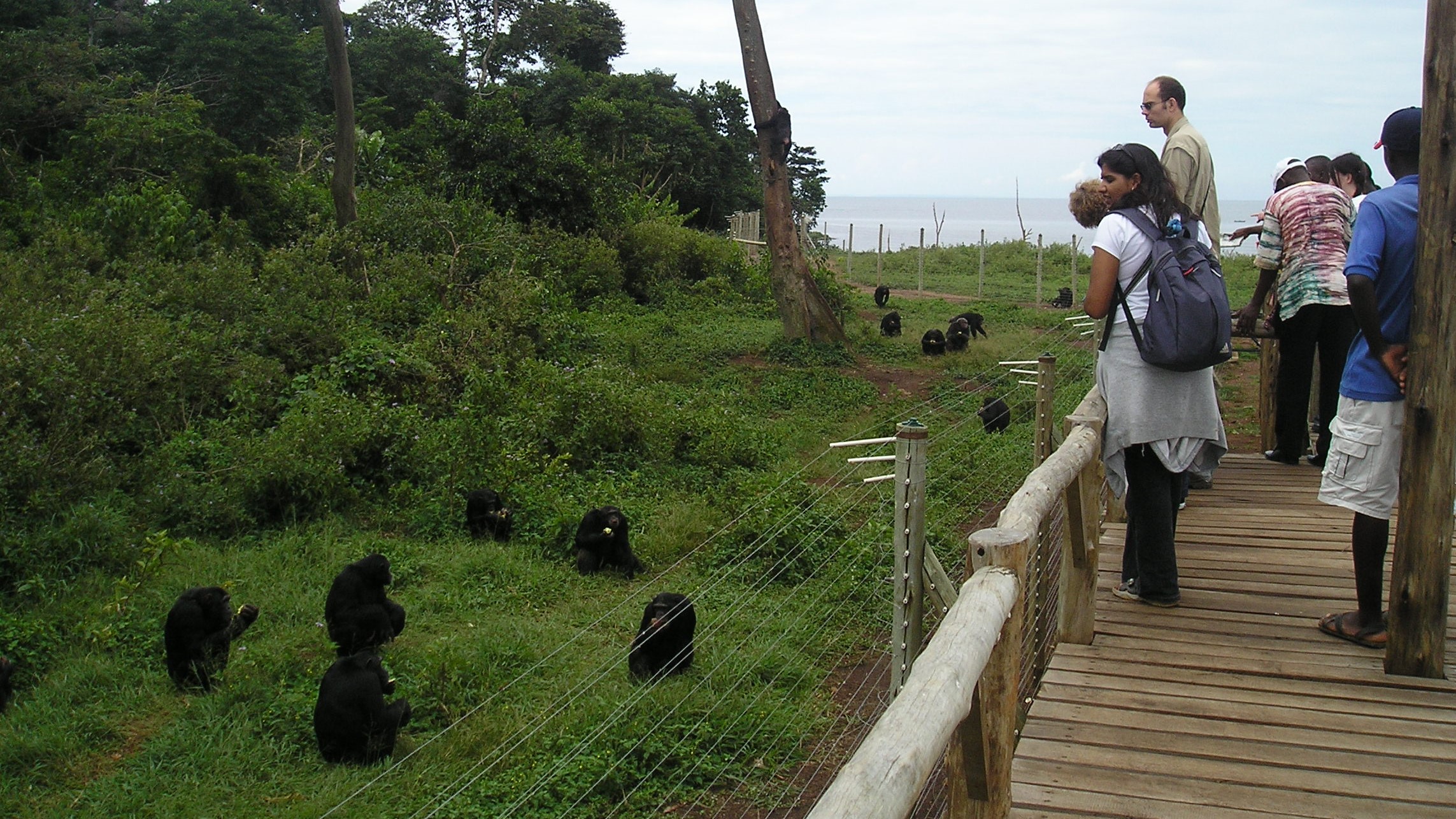
It is managed by the Chimpanzee Sanctuary and Wildlife Conservation Trust that was founded in 1998 with a mission to sustainably conserve chimpanzees in their habitats and provide captive care to those who cannot survive in the wild. Together with their partners such as The Jane Goodall Institute, the Uganda Wildlife Authority, and other NGOs whose mission is wildlife conservation, the trust has built a globally recognized organization that has addressed both the urgent need for rescuing chimpanzees confiscated from the wild as the growing threats to chimpanzees in the wild. Ngamba has been recognized as one of the top primate sanctuaries in Africa and for the last 20 years, they are the most successful conservation organization in Uganda something they continue to do up-to-date. Together with their international organization with whom they have partnered to implement cutting-edge field conservation work, they have developed sanctuary best practices.
The highlight of your visit will be observing the feeding of the chimps from an observation platform. During your visit, you will discover what it takes to run the sanctuary, how much food the chimps eat. You will also learn about conservation efforts and the chimpanzees’ greatest threats such poaching, illegal pet trade, etc.
On return to the mainland, you will have a hot lunch at your accommodation and later on visit the Botanical gardens.
Established in 1898, the Entebbe Botanical Gardens are situated on the northern shores of Lake Victoria. The gardens house several primates such as black and white colobus monkeys, vervet monkeys, and red-tailed monkeys. One of Entebbe Botanic Gardens claim to fame is that it was used as a backdrop to many of the Tarzan movies filmed in the 1940s! A walk in the gardens can last from 2 to 4 hours.
Dinner & overnight at your accommodation
-
Day 03
Transfer to Kibale – Bigodi wetland walk and Nocturnal Forest Walk in Kibale
After breakfast we drive to Fort Portal via Mubende.
Lunch will be in Fort Portal city. After lunch, we drive to Bigodi for the wetland walk. The Bigodi Wetland Sanctuary is home to 8 primate species. On your tour, you will likely see several kinds of monkeys including black and white colobus, red colobus, mangabey, red tail, vervet, and L’Hoest. The wetland walk is operated by a registered community-based organization. The income from the walk is used for community development projects such as schools and hospitals.
The night walk provides a unique experience as you walk through the very quiet forest devoid of the loud chimpanzees. Take in the fresh air, listen for the nocturnal birds and be on the lookout for as the night comes alive in this beautiful and green forest.
The Nocturnal forest walk is a special experience in Kibale. Starting at 7:30 pm, this walk can talk between 1 and 2 hours. Escorted by your ranger/guide and with the help of powerful torches, you will have a chance to see the bush babies, potto which take the night time to explore when their main predators – the chimpanzees are sleeping.
Fort Portal is a small and attractive city. The fort was built between 1891 and 1893 and named after Sir Gerald Portal, the British Consul General of Zanzibar who arrived in Uganda in 1892 to formalise the protectorate of Uganda. He died of malaria a few months after the fort was completed.
-
Day 04
Chimpanzee habituation experience
After breakfast, you leave for Kibale Forest renowned for the greatest variety and the highest concentration of primates in East-Africa. At the visitors centre the rangers will brief you about your guided nature walk in the tropical forest in search of the wild chimpanzees. This is one of the great moments of your safari!
At the visitors centre the rangers are ready to escort different groups for this adventure. They will brief you about your guided nature walk in the tropical forest in search of the wild chimpanzees. This is one of the great moments of your safari!
Today you will partake in the habituation process. This is an activity that will give you a unique opportunity to follow a group of chimpanzees that are not yet fully habituated on their daily activities. Accompanied with your ranger, the day starts very early in the morning where you follow the chimps from where the spent the night before (the rangers will take you there) and then you will follow the chimps throughout the day as they searc for food, hear them as they call out other group members, feed, groom, rest and play. Excellent photo moments here. Your ranger will give you all the information about the close cousins of ours, answer all your questions and show you the other treasures of this forest.
See the Magic Safaris Video
Through this activity, you have joined Uganda Wildlife Authority in its efforts to habituate chimpanzees without changing their natural environment.
This is one of the highlights of your safari and the best experience with the chimps in the wild!
Wild Chimpanzees: The number of chimps in the wild is steadily decreasing. The wilderness areas necessary to their survival are disappearing at an alarming rate as more forests are cut down for farming and other activities. As the human's closest relative the chimp is vulnerable to many of the same diseases, and their capture for medical research contributes to their decline, especially in West Africa as more forests are cut down for farm activities. In addition, recent outbreaks of the incurable disease Ebola hemorrhagic fever, threaten to decimate important chimpanzee populations.
-
Day 05
Transfer to Queen Elizabeth NP (Mweya) – Kazinga Channel
After breakfast transfer to Queen Elizabeth NP. You will enter the park and take the channel track which runs parallel with the Kazinga channel. The channel track is particularly rewarding with plenty of wildlife.
After lunch, you will take the launch trip on the Kazinga channel which many consider as a highlight of the safari. After the launch trip you have the option of relaxing at your accommodation or if you would like, your driver guide will take you for a late afternoon game drive!
Overnight at your accommodation
Baboons: In Mweya, you most likely see some troops of Baboons. The baboon, of all the primates in East Africa, most frequently interacts with people. Apart from humans, baboons are the most adaptable of the ground-dwelling primates and live in a wide variety of habitats. Intelligent and crafty, they can be agricultural pests, so they are treated as vermin rather than wildlife.
-
Day 06
Kyambura Gorge hike - Transfer to Queen Elizabeth NP (Ishasha)
After breakfast, you will drive to Kyambura gorge. On arrival you will be briefed by a Rangers and you will descend into the gorge for a chance to see the chimps.
The troop of chimpanzees in Kyambura have become known as the “Lost Chimpanzees”. These chimps have been isolated and completely cut off from the rest of the vast jungle in Queen Elizabeth National Park, as a result of deforestation and the expansion of local communities. This isolation has left them on the brink of extinction. The isolation is currently one of the biggest threats to the survival of these chimpanzees. Their small population size means that their gene pool has decreased, which can lead to mutations. This means that these chimpanzees will either die out as the population stagnates or future generations will possess harmful mutations, which will lead to extinction.
The Kyambura Gorge Eco-tourism Project has undertaken a series of activities since 2009 to safeguard the Kyambura Gorge ecosystem. Currently one of the most important aspects of the Kyambura Gorge Eco-tourism Project is the creation of a buffer zone to help alleviate the threat that encroaching human development poses to this tiny ecosystem.
Take a walk in the buffer area and be part of the conservation efforts taken by the community.
With the help of Volcanoes Safaris, the Kyambura Eco-tourism project was launched and a 3-hour guided walk has been developed and is offered to guests to showcase the buffer created by the project, the scenic views over the Gorge, the Park and Kyambura reserve, and the chance to experience the local homesteads. The purpose of the buffer is to keep the chimpanzees in the gorge away from the community farmlands as well as the animals of Queen Elizabeth Park that have been a threat to the community livelihoods. Together with the community, more than 3000 indigenous trees have been planted in the Kyambura Buffer area.
See here the video about "The lost chimpanzees of Kyambura"
After the visit to the gorge and guided Walk, you will then continue to Ishasha. In the late afternoon, you will have a game drive in the park in search of the famous tree-climbing lions. The park is home to plenty of other animals; buffaloes, elephants, waterbucks etc.
Dinner and overnight at your accommodation.
The Kyambura Gorge spans a distance of 16 kms or 10 miles long and 100m deep, while the widest point is over 500 metres. The Gorge emerges between savannah grasslands. It forms an outstanding topographic feature in dramatic contrast to surrounding savannah landscape. It is the only place in the Park where you can view the chimpanzees at close range - "Habituated" with other types of primates including black-and-white colobas monkey, red-tailed monkey, baboons and vervet monkeys.
-
Day 07
Transfer to Bwindi Impenetrable NP
After an early breakfast, your have a last chance of a game drive in Ishasha before you continue your journey to Buhoma. In the afternoon, you have a visit to the Gorilla Health and Community Conservation Centre to learn about their ground-breaking steps in the field of conservation. With ever increasing threats to the lives of the already endangered gorillas, CTPH has turned their focus on gorilla health through regular monitoring of habituated gorilla groups, and improving community attitudes to gorilla and forest conservation.
See here the CTPH video
Meals & overnight at your accommodation
-
Day 08
Hike to Nteko (Nkuringo Sector of Bwindi)
After an early breakfast, you will hike through the forest to Nkuringo.
This walk starts at Buhoma and is optional for those who are fit and would like to explore the forest on foot. Your driver/guide will drop you at the starting point and he will continue by road. Together with your forest guide and ranger, all you need on this walk is drinking water, a packed lunch and a rain jacket (this is a tropical rain forest, you need to be prepared for rain at any time). The rest of your luggage will be left in the car. It is safe with your driver and it will find you on the other side.
The Ivi River Trail is a 14km walk with the most fascinating experiences and is conducted through an old road in the Jungle. The trail usually takes six and a half to seven and a half hours. You will ascend and descend gently through the interesting areas of the jungles with numerous viewpoints from the marram road to Nkuringo while overlooking mist covered valleys. This trail is commonly used by the local community members when travelling to or from Nkuringo especially during market days to the Nteko Village, Situated on the Southern Boundary of the Park. Some of the interesting animals you are likely to encounter include duikers, bush pigs, some famous bird species, monkeys and beautifully coloured butterflies.
Meals & overnight at your accommodation.
-
Day 09
Gorilla Trekking in Bwindi Impenetrable NP
-
Day 10
2nd Gorilla Trekking in Mt Gahinga NP or The Golden Monkeys visit
After breakfast transfer to the Mgahinga Gorilla National Park headquarters where you have an option for a second gorilla trekking or trekking the golden monkeys. After briefing, you will begin the hike over the volcanic terrain in search for golden monkeys in the bamboo forests or the gorillas (depending on your choice).
- Trekking the gorillas of Mgahinga Gorilla NP will give you a different gorilla experience than in Bwindi. Mt Gahinga is a volcano and belongs to the Virunga chain of volcanoes. The gorillas of the Virunga ranges differ when it comes to external characteristics and way of life. The gorillas in the Virunga live at a higher altitude and have longer fur. The shape of the nose and the facial folds are also different. When looking for food, Bwindi gorillas tend to travel longer distances per day.
- The Golden Monkey may not be the most well-known primate, but is certainly an enjoyable, little creature that is worth visiting. It is a small curious monkey, golden in colour and loves to scamper around the trees. Golden monkeys are named after their golden-orange fur, and like mountain gorillas, are also considered endangered species. Conservation efforts have been put in place by the Uganda Wildlife Authority to ensure that the monkeys are protected – especially from poachers.
It is estimated that Mgahinga Gorilla National Park has between 3000-4000 golden monkeys grouped in troupes of the 30s led by a principal adult male. Hiking through the forests to sight the golden monkeys is not so strenuous like gorilla trekking because golden monkeys live in lower areas.
Meals & overnight at your accommodation.
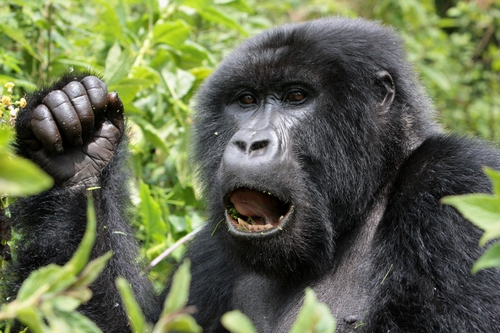
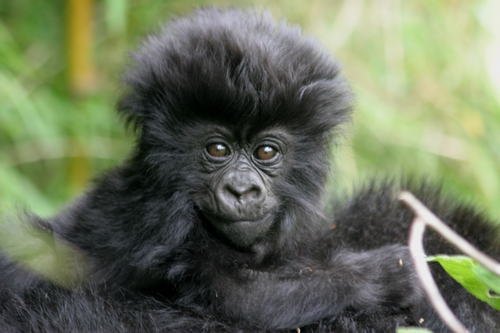
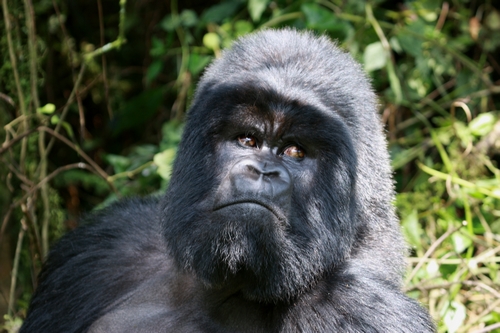
-
Day 11
Departure to Entebbe with a Domestic Flight
Today is the last day of your trip.
Your driver-guide will drop off at the airstrip for your flight back to Entebbe where you connect with your departure flight (Suitable for those with afternoon flights)
OR
Your driver-guide will take you to Cyanika (the border between Uganda and Rwanda) where you cross in to Rwanda and continue the drive to Kigali for your flight out.
Depending on the time of your flight, a city tour maybe arranged.
This is the end of what we hope has been an amazing & memorable journey in the Pearl of Africa!
The Tour package includes: Airport transfers, accommodation, all meals, plenty of mineral water, the services of a driver-guide, all park and entry fees, all activities as per programme: the Ngamba Island visit including the return transfer by boat, visit of the Entebbe botanical gardens , the Chimpanzee Habituation Experience, boat trip on the Kazinga Channel, chimpanzee trekking in Kyambura, the visit of The Kyambura Eco-tourism project, game drives in Ishasha, visit of Gorilla Health and Community Conservation Centre, guided Bwindi forest walk from Buhoma to Nteko, the Bwindi gorilla permit, at choice the second gorilla permit for Mgahinga Gorilla NP or the observation of the golden monkeys.
It Excludes: International airline ticket, the domestice flight Kisoro-Entebbe, Breakfast in Entebbe (first day); & Dinner in Entebbe (last day), laundry, travel insurance, gratuities,
beverages, tips, visas and personal expenses.
What to bring with you?
Money for your personal expenses, outfit with adapted colours for wildlife observation, good walking shoes, raingear, a few long-sleeve shirts, slippers, sweater for cool evenings, sun protection: hat, sunglasses, sun cream, video/photo camera, a 200 mm or longer telepholens is very usefull, reserve batteries, films and a torch.
Important: Gorilla permits are in high demand and need to be booked and paid in advance! Book your gorilla safari accordingly and avoid disappointment!
Uganda Visa & Travel Requirments: Find out more.


